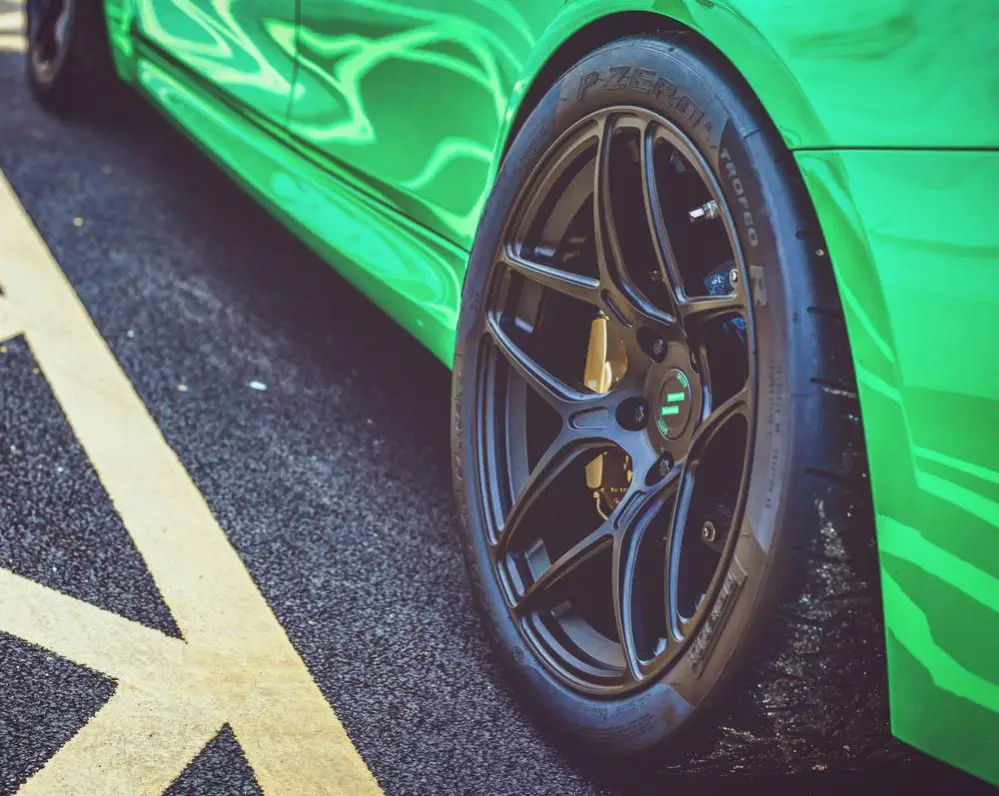
The boxes below are all tick-able, so you can see your progress in green, or alternatively you can print out the page to take with you when viewing a car.
Documents
Check the seller is the registered keeper on the V5C
Ensure the V5C has a watermark on it
Check the VIN (vehicle identification number) on the V5C matches that on the car
Check the colour on the V5C matches the car
Check the car’s MOT certificate
Check for any advisories on the latest MOT
Check previous MOT’s to ensure the mileage adds up and increases year on year
Check any previous advisories on old MOT certificates and ensure fixes have been implemented
Check the service book for the service history – Are there any large gaps?
Bodywork & Exterior
Check wheels for evidence of kerbing
Check that tires are correctly inflated – slightly deflated tyres could be a sign of a slow puncture
Listen closely to each tyre for any signs of air escaping
Check tyre sidewall to ensure no bulging
Check tyre tread. 1.6mm is the legal limit but it should be well above this
Check for uneven wear across the tyre face. This could mean uneven alignment
If the wheels are aftermarket check the manufacturer to ensure they are of a good quality
Check the windscreen for any chips or cracks that would need repairing
Check for any suspicious panels that look resprayed
Ensure the paint is a consistent quality all around the car and that there is no fading
Check the gaps between every panel are all the same
Check wheel wells and under car for any signs of welding or rust
Look for any signs of accident damage, check panel colour and form
Turn all lights on individually including indicators and ensure all are working
Interior
If the car is reasonably new the interior should reflect that and be almost spotless
Check seat bolsters for wear
Check all trim pieces are securely fitted
Check all equipment is working such as heated seats, window wipers etc.
Check all gauges are working
Turn the air conditioning on and ensure there is no squeaking sound
Check all fan speeds and settings work
Check steering wheel for wear or replacement
Check to see if any replaced panels have been installed correctly
See if the spare tyre and manufacturer tools are still in the car
Check for any signs of water damage in the glovebox, along the floor and under seats
Engine
Check the belts to see if they look worn
Check all hoses to ensure none are loose and none feel brittle
Ask how old the battery is ensuring it is no older than 4 years
Check engine bay for sign of leaks
Check the floor under car for signs of leaking
Check the oil level is at correct level
Check that the oil on dipstick is not discoloured (it should be clear)
Remove the oil cap and check for a white or brown sludge. You shouldn’t see any
If mods such as a turbo have been added, check for that the corresponding parts have been installed such as intercooler
Check all other fluids such as brake fluid and coolant to ensure they are all at the correct level
Turn the ignition on ensuring all warning lights come on
Start the car and check all warning lights go out
Ask seller to start car with bonnet up. Listen for unusual noises or screeching
Check the car idles consistently after a couple;e of minutes
Gearbox & Clutch
Check the biting point of the clutch at a stand still. It should be at around middle of the pedal travel
If the clutch is long, meaning the bite point is at the floor it could mean a failing clutch
Exhaust
With engine on walk to back of the car – Check for any consistent coloured smoke
Blue smoke indicates oil leaking into the cylinders
White smoke can point to head gasket failure
Black smoke indicates too much fuel being burned
Suspension
Push firmly on each corner of the car a few times and release. It should return to stationary with a couple of bounces and shouldn’t squeak
Check the vehicle is sitting level
When driving pay attention for rough ride
When driving listen for any squeaks
Make sure vehicle doesn’t pull to one side when driving
Test Drive
Find a safe spot and turn full lock both directions to ensure nothing rubs
Brake firmly in a straight line, make sure the brake pedal feels firm and responsive
Check the car doesn’t pull to one direction when braking
Drive over bumps and listen out for any noises from the suspension
Let go of the steering wheel briefly when safe to do so and ensure it is centred and remains driving straight
Listen for any interior rattling
Check all gears engage smoothly
If the car is automatic check that the car kicks down well when you accelerate hard
If driving a manual, drive at around 30MPH in top gear and floor the throttle. Ensure the engine revs don’t increase quickly. This could mean the clutch is slipping
If you are looking to buy a modified used car, but are unsure about some of the mechanical aspects. Then head over to our ultimate guide to car modifications to learn about which modifications you should and shouldn’t be looking for.
